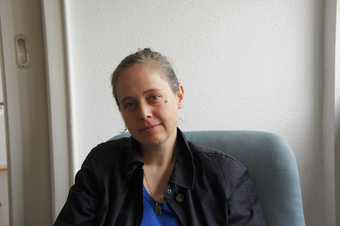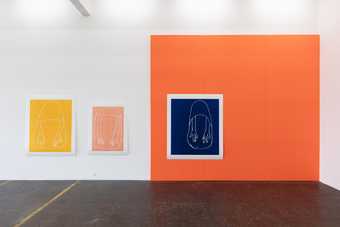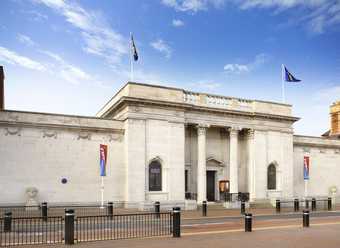
Andrea Büttner

Installation View of Andrea Büttner: Gesamtzusammenhang, Kunst Halle Sankt Gallen, Switzerland, 2017 Photo: Kunst Halle Sankt Gallen, Gunnar Meier
Andrea Büttner was born in 1972 in Stuttgart, Germany. She studied at the Royal College of Art, London, Humboldt University of Berlin and Berlin University of the Arts. Selected solo exhibitions include Andrea Büttner, Musée Régional d’Art Contemporain, Sérignan, France (2016); Beggars and iPhones, Kunsthalle Wien, Austria (2015); Andrea Büttner, David Kordansky Gallery, Los Angeles, USA (2016); Andrea Büttner, Walker Art Center, Minneapolis, USA (2015), BP Spotlight: Andrea Büttner, Tate Britain, London, UK (2014); and Andrea Büttner. 2, Museum Ludwig, Cologne, Germany (2014). Recent group shows include Documenta 13 (2012); Broken White, Van Abbe Museum, Eindhoven, Netherlands (2016), and British Art Show 8, UK touring exhibition (2016).
Andrea Büttner’s diverse practice encompasses printmaking, sculpture, painting, film and collaborative projects. Her subjects are equally broad ranging, exploring topics including botany, Catholicism, philosophy and art history. She often references other artists and thinkers including HAP Grieshaber, Immanuel Kant, Gwen John, Martin Kippenberger, Dieter Roth and Simone Weil. Büttner was first celebrated for her bold use of what is often seen as unfashionable media, namely woodcut and glass painting. Ideas of shame, vulnerability, poverty and embarrassment run throughout her work, countering the romantic and heroic nature associated with much artistic practice.
In works such as Beggar 2016, an ongoing series of woodblock prints, Büttner appropriates the figure of Ernst Barlach’s sculpture Verhüllte Bettlerin 1919 by presenting the simplified form of a beggar. The gesture of the hooded kneeling figure with outstretched hands becomes a symbol of both vulnerability and forgiveness. A period of research from 2011 to 2014 at the National Museum of Wales in Cardiff led Büttner to consider the museum’s world renowned collection of moss samples in relation to drawings by the British artist Gwen John, producing the book Hidden Marriages 2014. She partners moss, a beautiful plant with a low economic value, with drawings by John, with both the plant and the drawings sharing small and modest qualities. This combination of botany and art history is typical of Büttner’s practice, highlighting subjects that are not usually recognised within contemporary art.
Büttner frequently references the limitations of the body, often painting the gallery walls as high as she can reach and using materials known for their fragility such as unfired clay. In a recent body of work the artist has transcribed the smudges left behind on her iPhone screen into colourful etchings that recall mid-century Gestural Abstraction. Once again the overlooked and undervalued is brought into the physical gallery space, giving care and attention to a residual mark left by a human body on a digital device.
Andrea Büttner is 45 and lives and works in London and Berlin.

